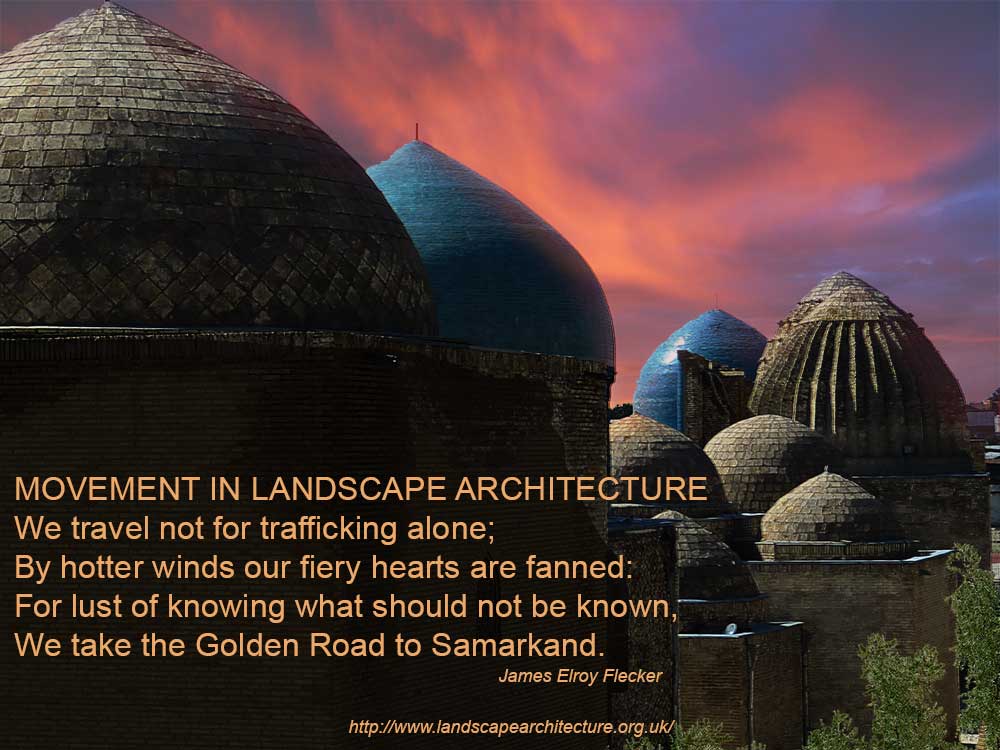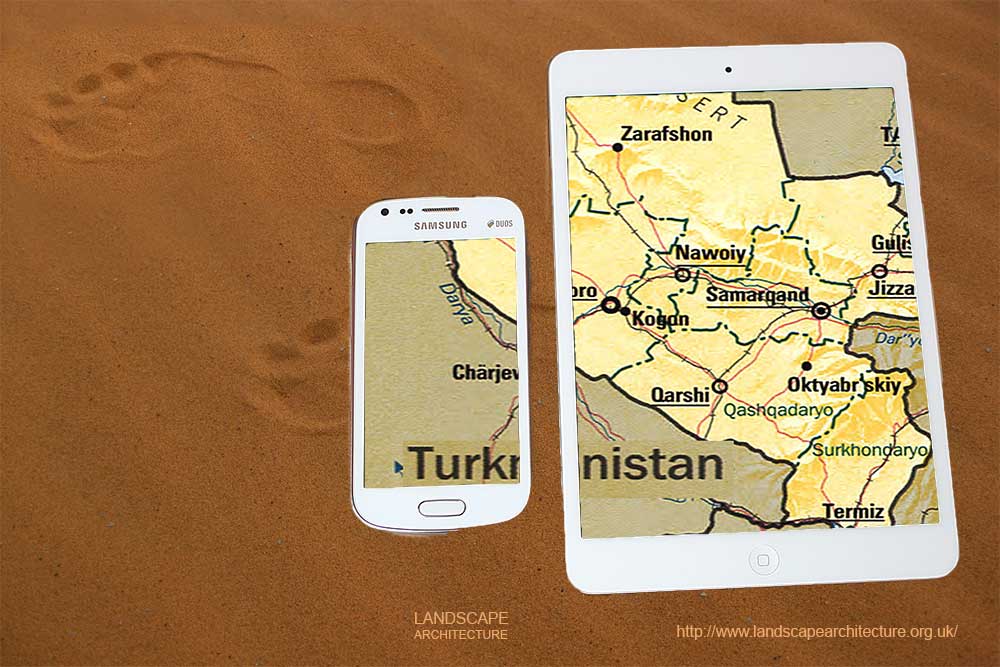Movement in Landscape Architecture

Lancelot Brown called himself a place-maker. But what is a ‘place’? The word derives, via French, from the Latin word platea. It meant ‘street’ in classical Latin. In post-classical Latin it was used for market places and other public spaces. Brown used it to mean ‘a country house and park’. It may be that before the age of settlement a platea could be either a destination or a route used by nomads for ceremonial, commercial and other purposes. Landscape architecture is seen as an art of ‘place-making’ in the sense of creating a locale with particular characteristics.
The historic origin of the art of landscape architecture is to be found in Mesopotamia, in the specific sense that this is where the earliest written records of composing landform, water, vegetation and buildings are to be found. They were composed to make palaces, temples, cities and ‘ways’. Ceremonial ways were also made in Egypt, Greece and Rome. As discussed in a post on the landscape of roads, the art of composing landscapes has often included ‘places to move through’ – as well as bounded places in public or private ownership.
I wish landscape architects were as much involved with movement in unbounded space as they are with bounded space. This includes greenways, cycle paths, green streets, highways, footpaths, bridleways, routes through open country marked only by GPX tracks on mobile devices – and, of course, the Golden Road to Samarkand.
We travel not for trafficking alone;
By hotter winds our fiery hearts are fanned:
For lust of knowing what should not be known,
We take the Golden Road to Samarkand.
James Elroy Flecker was born in Lewisham in 1884 and died in Davos at the age of 30. He was considered ‘unquestionably the greatest premature loss that English literature has suffered since the death of Keats’ – and he might have been a great landscape architect.

